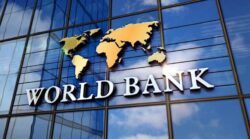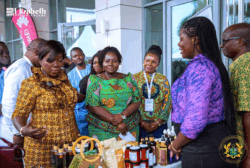Energy sector levies collected from 2016 to December 31, 2022 under the Energy Sector Levies Act (ESLA) stood at GH¢18.35billion at the end of last year, according to the 2022 annual report on management of these levies.
Despite this performance, the report by the Ministry of Finance highlighted that collection fell short by GH¢908.91million, representing a 5.0 percent deviation. This shortfall was primarily attributed to decreased consumption of petroleum products during the period.
In addition to the established accounts of Energy Sector Levies, the report also delved into other petroleum levies – including the Road Fund and Energy Fund, which had a programmed collection target of GH¢11.67billion. However, actual collections amounted to GH¢11.56billion, reflecting a 1.0 percent deviation primarily caused by lower-than-anticipated consumption of petroleum products.
Of the total collected amount, GH¢17.30billion was lodged into the established accounts; slightly below the GH¢17.45billion in collections, with a 0.9 percent shortfall. This discrepancy was attributed to unpaid invoices by oil marketing companies (OMCs) and cash in transit.
Established accounts under ESLA are the Energy Debt Service Account (EDSA), Power Generation and Infrastructure Support sub-Account (PGISsA), Energy Sector Recovery Levy (ESRLA), Sanitation and Pollution Account (SPLA) and the Price Stabilisation and Recovery Account (PSRA)
The Energy Sector Levies have played a pivotal role in funding various critical projects, including power utility debt payments, subsidies for premix fuel and residual fuel oil, public lighting infrastructure, road maintenance and support for the Energy Commission.
Minister of Finance, Ken Ofori-Atta, acknowledged the mixed performance in 2022, noting that: “Actual Energy Sector Levies collected amounted to GH¢6,703.30million, revealing a 7.9 percent shortfall from the target, although it was 6.5 percent above collections for 2021”.
He emphasised that these results should be considered in the light of global upheavals in the energy market during 2022, which impacted energy costs and resulted in macroeconomic uncertainties.
The report highlighted disruptions in the global energy market in 2022 – including sanctions against major energy exporters which resulted in higher energy costs worldwide. Ghana faced a significant challenge with inflation rates reaching 54.1 percent and a 30 percent cumulative depreciation of the cedi against the US dollar by year-end last year.
In response to these challenges, Mr. Ofori-Atta underscored the importance of securing the Staff Level Agreement with the International Monetary Fund (IMF) and the launch of a Domestic Debt Exchange Programme in December 2022. These interventions, he explained, are designed to support structural reforms in the energy sector and harness the potential of energy sector levies for energy security and economic transformation.
Looking ahead, the report presents an optimistic forecast for levies collection. In 2023, a total of GH¢8.08billion is projected to be collected, representing a 10.9 percent increase over the 2022 programmed figure. The medium-term outlook remains positive, with estimated collections of GH¢9.64billion, GH¢11.25billion and GH¢13.10billion for 2024, 2025 and 2026 respectively.
Minister Ken Ofori-Atta concluded: “The effective and efficient operation of ESLA remains central to the national quest for macroeconomic stability, robust economic growth and economic and structural transformation”. He underscored government’s unwavering commitment to preserving and leveraging the potential of ESLA for the country’s energy security and economic growth.










